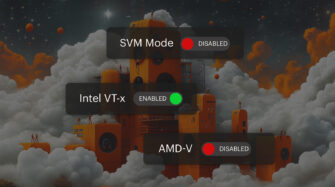When you take on a new client, you may spend a lot of time assessing how a client manages files and permissions. Sometimes, clients have no process for storing and sharing files, and if they don’t know how to map a network drive, employees store files to their desktops because that’s the easiest solution.
You can’t be effective at remote monitoring and management if file hygiene is a hot mess. So when you encounter a sloppy file situation, you need to make network drive mapping a priority.
In this post, we’ll explain the benefits of mapping a network drive and provide a refresher on how to map network drives on Windows and Mac. We’ll also cover how to remotely map a network drive, and how to configure access permissions with GPO.
Benefits of mapping a network drive
Here are some talking points that can help clients understand why you need to map network drives:
Centralized storage and collaboration
Storing files on a shared drive ensures everyone has access to the latest version of a file, and that’s a more efficient solution than users having their own version of a file. For example, if a graphic designer stored the only editable presentation template on their laptop and they’re on vacation, other employees might be unable to create a branded presentation until the designer returns from Fiji.
Better control and backups
Servers are more likely to be backed up regularly, so when users save files to a network drive, those files are included in backups, too. MSPs can set up different drives and automate backup frequency accordingly, like creating a “D” drive for design files and scheduling incremental daily backups to preserve progress on design files.
Simplified access permissions and policies
A structured network drive system makes it easy for MSPs to configure Group Policy permissions based on Organizational Unit. So, the D drive might be accessible only for designers, an H drive could be for HR departments only, and an F drive might be just for the finance department.
MSPs can also set user restrictions based on each drive, like denying write access for F-drive files.
3 drawbacks of network drives
(MSPs: unlike the previous “benefits” section, this section is just for you — no need to alarm clients with these scenarios):
1. Dependency on network availability
Obviously, if a client’s files are accessible only via network drives, they lose access if there’s a network outage or the server goes down. But if you regularly back up files, clients should be able to access the most recent backup of any file.
2. Security vulnerabilities
If a malicious outsider gains access to the file server, they could potentially intercept all client files, including sensitive customer data. You can mitigate this risk by following best practices for data security management, like:
- Using data intrusion detection tools
- Implementing zero-trust identity and privilege management
- Automating software updates and security patches
3. Complex cloud access
Files stored to an on-premise network drive aren’t useful for remote employees. MSPs may need to configure shared cloud-based workspaces to enable remote access for client employees.
Mapped drives are still essential for certain types of enterprise environments that require on-premise file storage. So knowing how to map a network drive is a useful skill.
How to map a network drive on Windows
Mapping a drive in Windows takes just a minute or two. The exact steps might vary slightly by Windows version (Windows 10 vs. 11), but the concept is the same. You can even script this process with command-line tools, but here’s the GUI method:
- Open File Explorer: Press the Windows logo key + E on your keyboard. In the left navigation pane, click on This PC (on Windows 10/11) or Computer (on Windows 7) to see your current drives and network locations.
- Select This PC tab.
- In the File Explorer ribbon, select More (…) > Map network drive to launch the map network drive dialog box.
- Choose a drive letter from the list of available options.
- In the Folder field, specify the folder path, using the hostnamesharename format.
- Check the box for Reconnect at sign-in
- Click Finish.
How to map a network drive on a Mac
Mapping a network drive on a Mac is a quick process, too:
- Open Finder, select Go in the menu bar, then select Connect to Server in the drop-down to launch the Connect to Server pop-up.
- In the server address field, enter the address of the network drive you want to connect to (smb:// followed by the server name or IP and the drive name).
- Click Connect. (If this is the first time connecting to that server, you’ll be prompted to enter a username and password).
How to map a network drive remotely
Even if your clients work in a centralized location and have no remote employees, their office may be too far away for in-person IT visits. So you need a way to remotely manage network drive mapping.
Here’s our step-by-step tutorial on remote network drive mapping:
1. Sign up for Syncro.
2. Use the Splashtop remote access integration to map network drives for clients.
That’s it. That’s the whole tutorial.
Make the switch to Syncro
Looking for a better way to handle RMM tasks? Find out why MSPs are making the switch to Syncro. Sign up for your 14-day free trial today to see what Syncro can do.
Share














